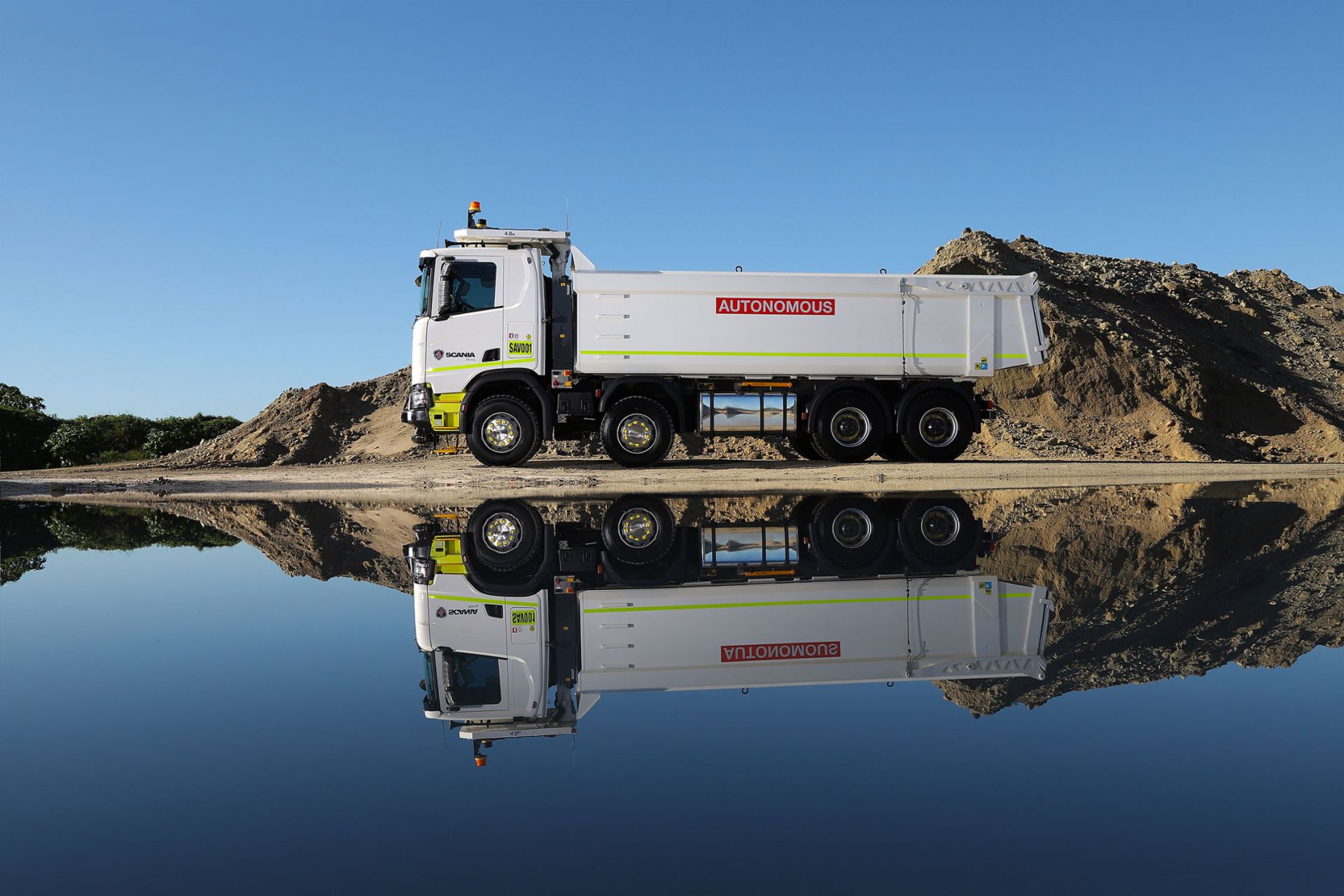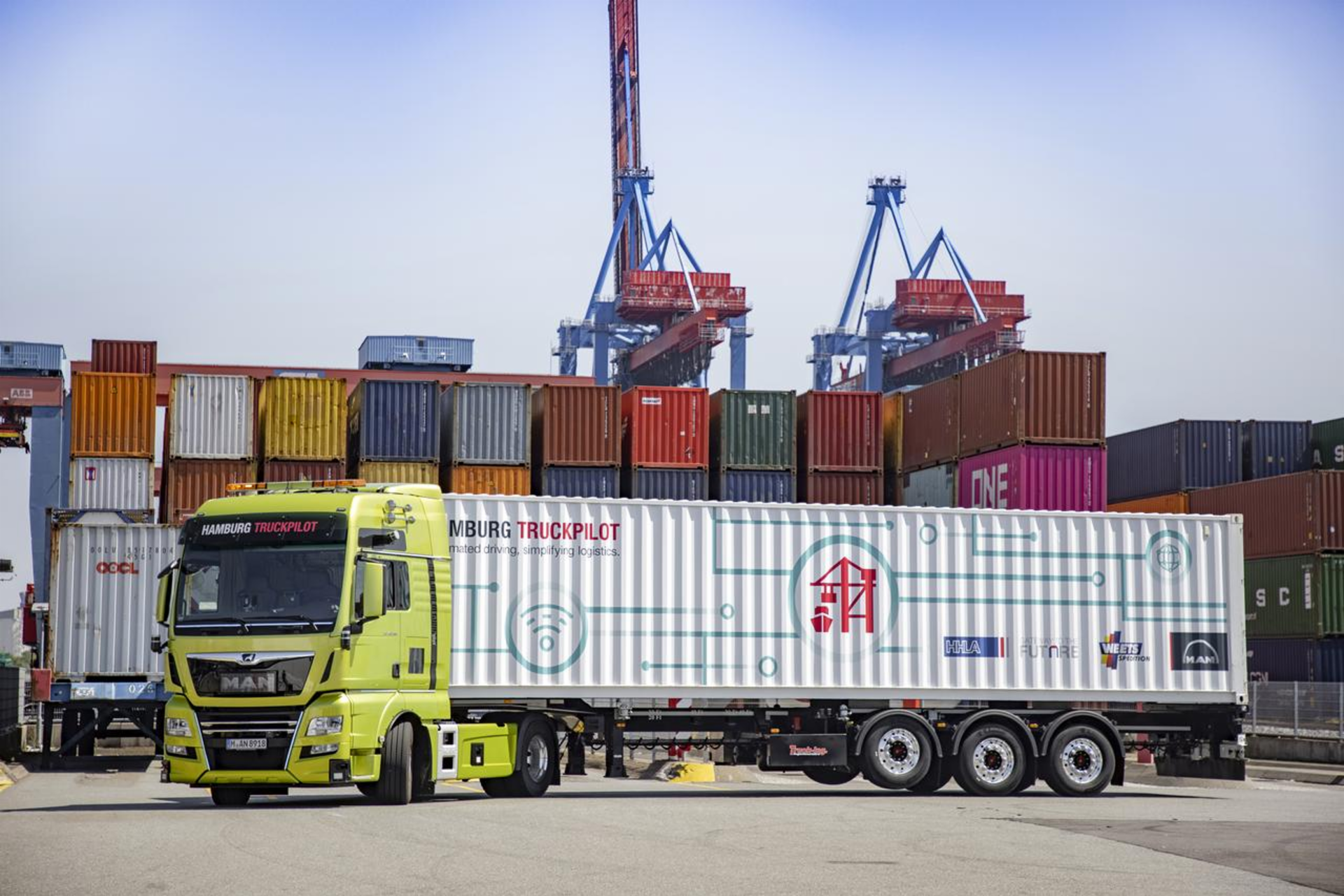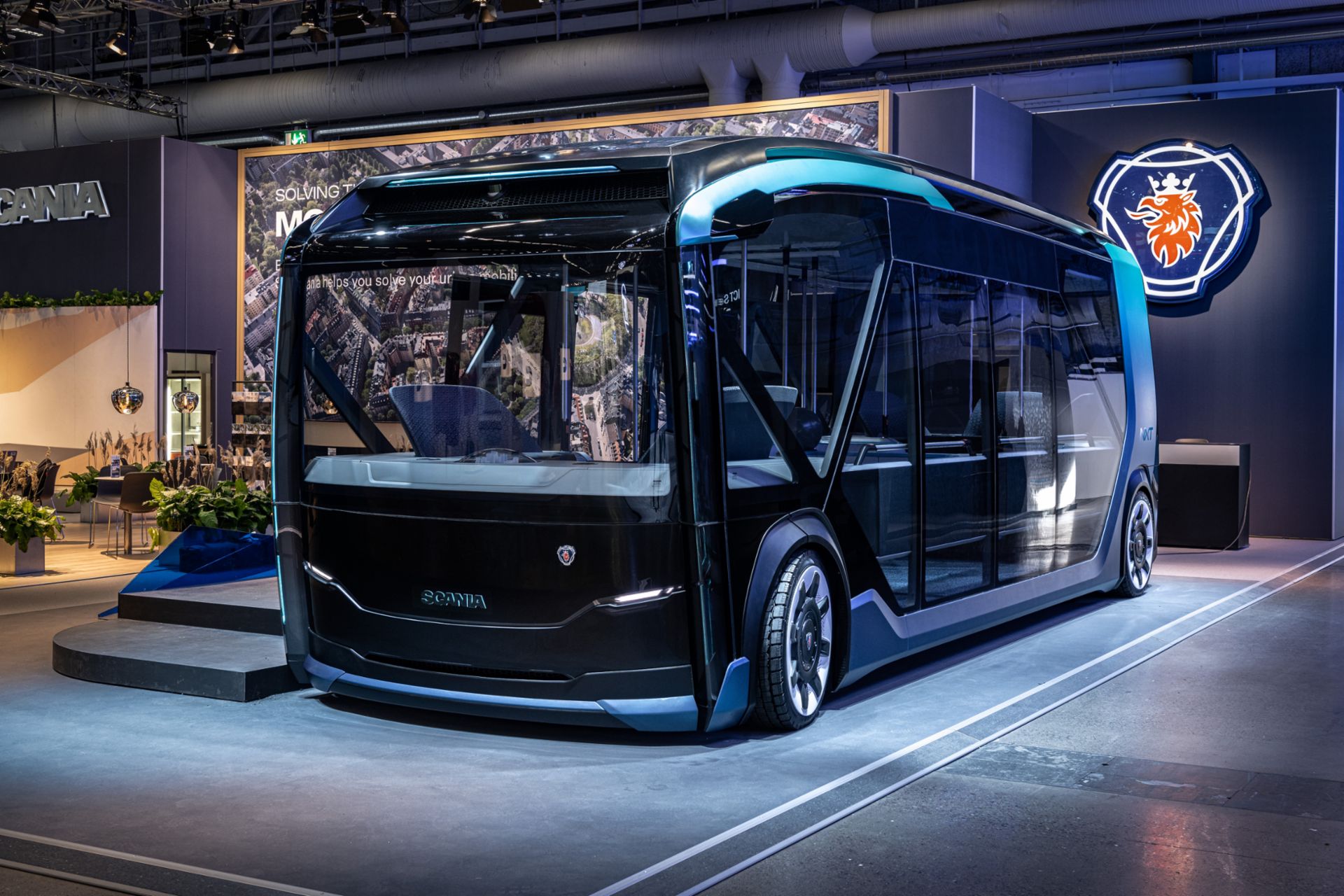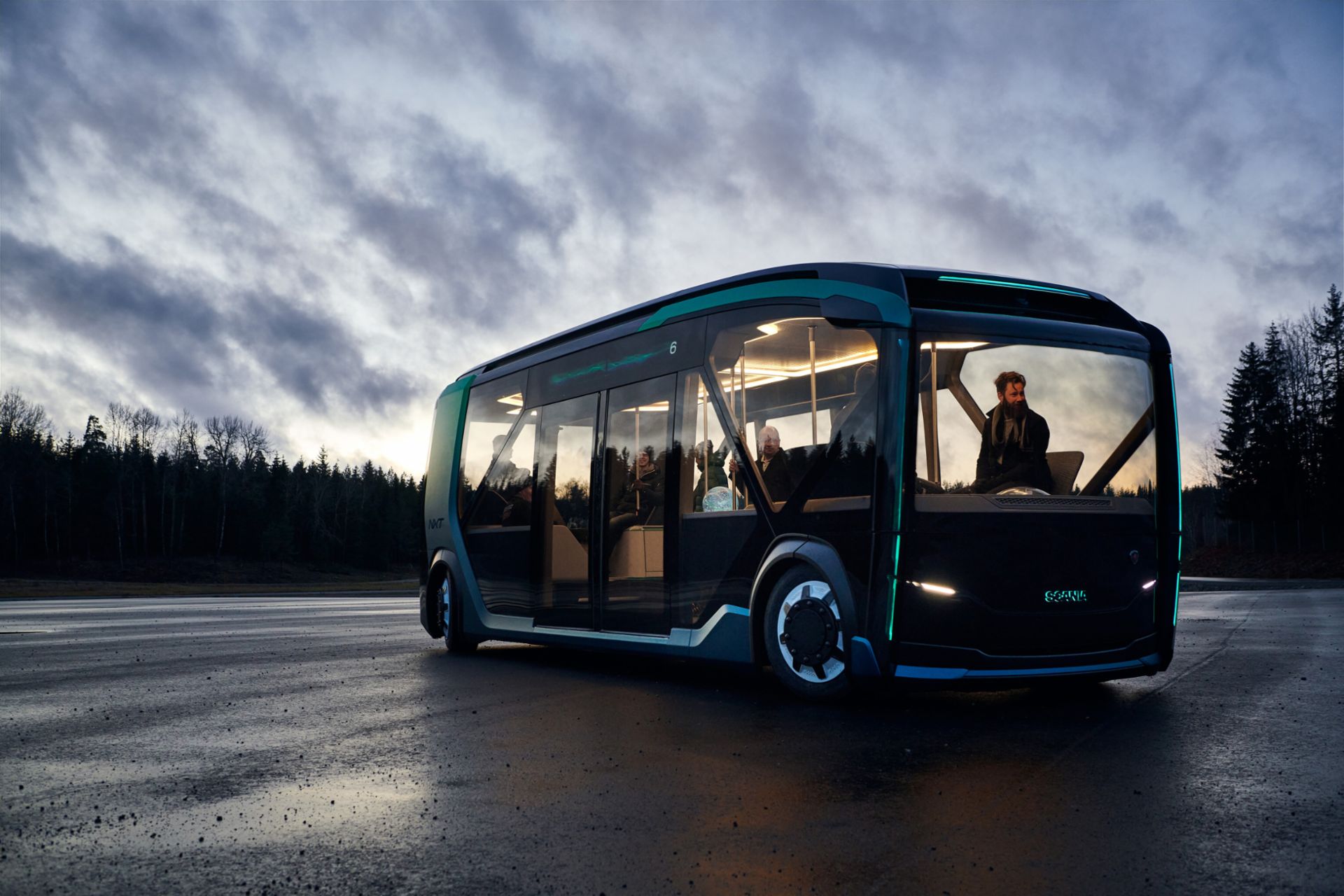Autonomous driving and electromobility are key fields for the future of the transport sector as a whole. Be it cars, trucks, buses, or even construction machinery such as excavators and wheel loaders, there are plenty of examples of applications for both fields. However, linking the two remains the exception - even though this fusion offers by far the greatest potential, both economically and ecologically, especially in the truck and transport sector.
Let's have a look at the current state of affairs: Electric cars have long been a permanent fixture on the roads, and representatives of the bus and truck community are gaining ground. Where fully autonomous vehicles are concerned, the hurdles are generally higher, especially for passenger cars, but there are already near-series applications of autonomous trucks in port terminals, in hub-to-hub traffic, or in opencast mining. TRATON GROUP, represented worldwide by Scania, MAN, Volkswagen Caminhões e Ônibus (VWCO) and Navistar, is currently involved in a wealth of such projects. In the field of electromobility, the status is even more advanced: battery-electric trucks for regional transport are in series production under the umbrella of the TRATON GROUP, with long-haul variants to follow from 2024.

Electrification is possible and economical
We’ve already driven down the road from theory to practice: In autumn 2021, Fraunhofer ISI, on behalf of Transport & Environment, demonstrated that it is possible to electrify regional delivery traffic. TRATON analyzed the results of the feasibility study, which is based on real company data, with great interest. Ekaterina Boening, project manager for the study at Transport & Environment Germany, summarizes the results very clearly: "The electrification of road freight transport is possible and promises economic benefits for companies." Specifically, in a joint study with ICCT (The International Council on Clean Transportation), T&E sees cost parity of e-trucks with diesel trucks as early as the mid-2020s.
In general, TRATON expects as well that the total cost of ownership of battery-electric trucks will be comparable to that of diesel vehicles in the near future - with a tendency to significantly undercut them from the mid-twenties. Last but not least, ever cheaper and at the same time longer-lasting batteries are emerging in development, giving not only electric distribution trucks further impetus, but also electric long-haul trucks.

The logical link: electric and autonomous
The next forward-looking step lies in linking the electric vehicles with autonomous driving. Among the practical trials that the TRATON GROUP is conducting with partners and customers worldwide, a number of lighthouse projects stand out. Since 2018, for example, Scania has garnered experience with an autonomous heavy construction site vehicle at an Australian salt mine operated by Rio Tinto. The major advantage of this project is that it involves a demarcated area without passenger traffic. MAN is running further projects in clearly defined areas of operation at an intermodal depot in Ulm and at the Port of Hamburg: automated container transport marks an important section on the road to autonomous hub-to-hub transport. In TRATON's opinion, this is generally one of the earliest and at the same time most promising use cases for autonomous and, if possible, battery-electric trucks: in comparatively less complex long-distance highway operations between freight centers, autonomous trucks offer the greatest potential for making transports more efficient, cost-effective, reliable, sustainable, and safe. Incidentally, the legal prerequisites for future hub-to-hub applications as an important component of Logistics 4.0 are being created in Germany by the Autonomous Driving Act, which came into force in July 2021.

The road to self-driving trucks
Scania is making the transition to autonomous battery-electric driving with the NXT concept vehicle (Fig. 2). Intended for urban environments, this vehicle also takes a modular approach: the autonomous chassis with electric drive unit can be combined with interchangeable bodies to operate at different times of the day and night, for example as a commuter bus, distribution truck, or refuse collection vehicle. The virtually silent electric drive also offers major advantages when it comes to working in noise-sensitive areas or during statutory rest periods.
The NXT is still a vision of the future, but what can we expect in the medium term from the combination of autonomous and electric drive trains? For TRATON, the maximum benefit of combining both topics is the total cost of ownership (TCO). In terms of total cost of ownership per kilometer, based on the same annual mileage, savings of up to double-digit percentages can already be assumed in the comparison of combustion engine versus electric motor. In the next step toward an autonomously driving e-vehicle without a driver, the savings will be even more significant. In this calculation, the overall costs for the vehicle, maintenance and repair, and energy remain roughly the same, while the savings in driver salaries far outweigh the expense for the self-driving system (SDS).The management consultancy Capgemini puts the savings in total cost of ownership due to the elimination of the driver at over 30 percent. Added to this is the greater safety provided by computer-controlled, predictive driving.
Unbeatable cost advantages
With the omission of drivers, an autonomous e-truck can also easily cover two to two-and-a-half times the driving distance. Even with loading and unloading operations, which for example in container transport could also be carried out autonomously, and the necessary (high-performance) charging, up to 20 hours of driving time per day can realistically be reached. At an average highway speed of 75 km/h, this means up to 1,500 kilometers per day or 340,000 kilometers per year easily, with weekends, public holidays and times for service and maintenance already taken into account. And last but not least, the use of autonomous trucks offers an approach to the driver shortage that is not only looming but already exists: In the UK, the shortage of professional drivers has already led to empty supermarket shelves. In Germany, for example, there is already a shortage of up to 80,000 drivers, according to the German Freight Transport Logistics and Disposal Association (Bundesverband Güterverkehr Logistik und Entsorgung BGL). Each year, moreover, around 30,000 truck drivers retire, while only between 13,000 and 17,000 people take up the driving profession. The driver shortage is consequently increasing, and autonomous vehicles can help to ensure supply chains in the future nonetheless.
When considering the possible mileage, another aspect plays an important role: autonomous driving eliminates the severe restrictions imposed by mandatory driving and rest times for human drivers. s This means that the current scenario of charging for 45 minutes during a driving beak, every four and a half hours, will be obsolete in the future: With autonomously driving trucks, the recharging stops can be planned more flexibly and optimized holistically. This will depend on the route, the condition of the vehicle or battery, and the existing infrastructure and energy prices. In concrete terms, this means that the long-haul truck can potentially recharge whenever electricity is available in abundance and therefore cheaply. This not only minimizes costs, but also relieves the strain on the grids. Unwanted power peaks, which occur frequently, especially with renewables - a lot of wind and a lot of sun but little demand at the same time - already bring stress to the system time and again.
In addition, human personnel will also be required less and less frequently during charging: Automated charging stations at which the vehicle only has to assume a predefined position are already being tested in practice. Robotic systems are being used for conductive fast charging with cables, preferably in the megawatt range. The idea of inductive charging suggests itself, but is not yet an issue due to the much lower efficiency or charging power.
Industry in transition
"Still in this decade, ahead of a broad market penetration of autonomous driving, recharging times of about half an hour and average nonstop driving times of eight hours for an autonomous truck are entirely realistic," calculates Andreas Kammel, who is responsible for the electrification strategy at TRATON GROUP. "Autonomous driving fully pushes the cost advantages of the e-truck through intensive use. This makes e-trucks by far the most cost-effective and cleanest solution for long-distance heavy-duty transport, not only in the short term, but especially in the long term. All we need to do to make this happen is plan ahead and think about the ramp-up of e-trucks now with the charging infrastructure for cars," he adds.
In summary: As soon as technically feasible and permitted by law, the TCO advantage will lead to a rapid switch to autonomous e-trucks on all suitable routes. On such routes, traditional transports will simply no longer be competitive, and the immense cost benefits will far outweigh the investments in charging infrastructure. Changes in the business models of freight forwarders will go hand in hand with this, as will the demands of truck manufacturers. At TRATON, this transformation is in full swing.




.jpg/jcr:content/Teaser-Grafik-Tiva-Sharifi-3840x2560-V1-(1).jpg
)
.jpg/jcr:content/Teaser-Grafik-Mansoureh-3840x2560-V1-(1).jpg
)